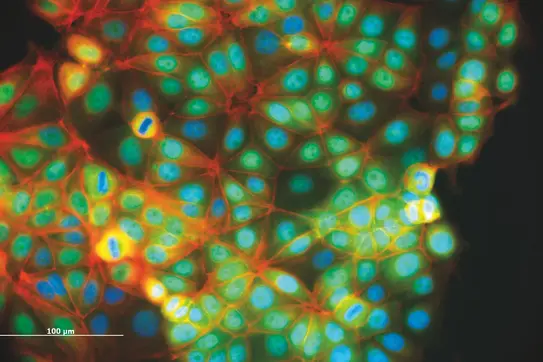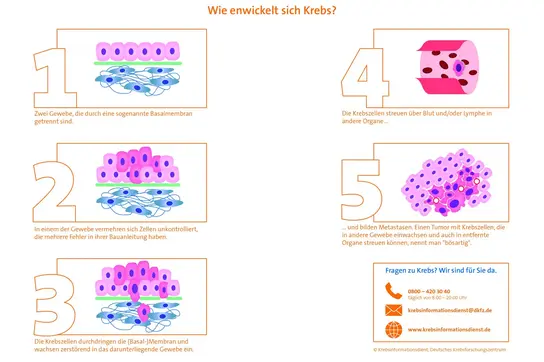What is cancer?
In medicine, cancer refers to a malignant tissue formation, a so-called malignant neoplasm or malignoma. The tumor cells in a cancerous tumor spread uncontrolled, they grow into surrounding areas, destroy healthy tissue and form metastases. They no longer respond to signals that control growth in healthy tissue and can evade control by the immune system.

Cancer - a disease of the genes
Several steps are necessary to turn cells into cancer cells: tumor suppressor genes, i.e. genes that normally slow down cancer development, are silenced. Proto-oncogenes, i.e. genes that promote the development of cancer, are switched on. These processes change the genetic information that serves as a "blueprint" for all the gene products required in the body. This results in missing, altered, excessive or untimely structural proteins, enzymes, hormones and other messenger substances as well as important molecules of cell metabolism.
Nowadays, we distinguish between genetic and epigenetic changes in genetic information. In the case of genetic changes, the sequence of DNA components changes - whether through the loss, addition or shifting of individual components or entire sections. As a result, too much or too little of the corresponding gene products are produced or their properties are altered. Epigenetic changes affect the "packaging" of the DNA. Molecules attached to the genetic information ensure that genes cannot be read. This can also be a step towards the development of cancer. However, epigenetic changes are potentially reversible. Lifestyle changes may help to reverse at least some cancer-promoting changes to genetic information.

What causes changes in genetic information?
External influences can directly damage the genetic material or trigger inflammatory processes, which ultimately also affect the genetic information. These include known risk factors such as smoking, obesity and associated metabolic changes or UV radiation. However, in many cases, cancer develops spontaneously: errors occur by chance during cell division - even in people who have always lived a healthy life. The body's own repair mechanisms can correct many errors in the genetic material, but not all of them. This is why more and more changes accumulate over the course of a lifetime. This explains, among other things, why the risk of cancer increases with age.
Tumor stem cells are probably the main cause of tumor growth. Each time a cell divides, there is a risk that its unstable genetic information will continue to change. In this way, for example, resistance to drugs can develop in a tumor. In addition, metastases can have different characteristics to the original tumor. Many of the processes involved in the development of cancer are already known, but further intensive research is urgently needed to understand the development of cancer in detail. The greater the knowledge of the complex interrelationships, the better strategies can be developed to improve the early detection, diagnosis and treatment of cancer.